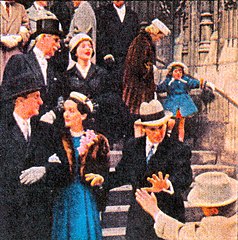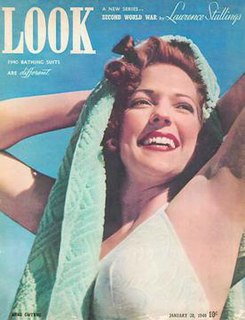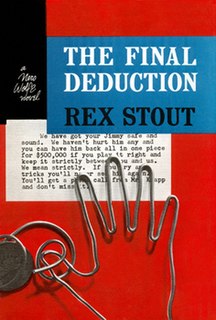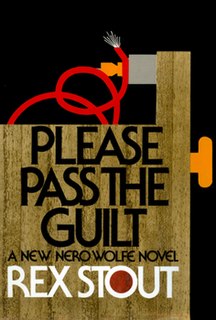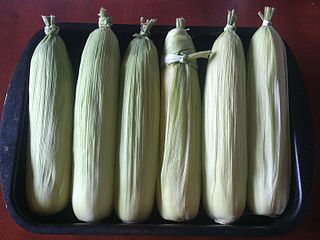Plot summary
When Nero Wolfe's envy is aroused he'll go to any length to satisfy it. He embarrassed Archie in his pursuit of Jerome Berin's recipe for saucisse minuit, and he strongarmed Lewis Hewitt to get those black orchids. Now he's learned that Millard Bynoe has hybridized a pink Vanda orchid, a unique plant. He wants to examine one and Bynoe has turned him down.

Too Many Cooks is the fifth Nero Wolfe detective novel by American mystery writer Rex Stout. The story was serialized in The American Magazine before its publication in book form in 1938 by Farrar & Rinehart, Inc. The novel was collected in the omnibus volume Kings Full of Aces, published in 1969 by the Viking Press.
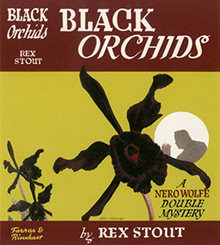
Black Orchids is a Nero Wolfe double mystery by Rex Stout published in 1942 by Farrar & Rinehart, Inc. Stout's first short story collection, the volume is composed of two novellas that had appeared in abridged form in The American Magazine:

Vanda is a genus in the orchid family, Orchidaceae. There are about 80 species, and the genus is commonly cultivated for the marketplace. This genus and its allies are considered to be among the most specifically adapted of all orchids within the Orchidaceae. The genus is highly prized in horticulture for its showy, fragrant, long-lasting, and intensely colorful flowers. Vanda species are widespread across East Asia, Southeast Asia, and New Guinea, with a few species extending into Queensland and some of the islands of the western Pacific.
Wolfe has also learned that Mrs. Bynoe will sport a spray of the pink Vanda at this year's Easter parade in New York, and wonders if Archie knows anyone who would steal it from her. Archie does have a suggestion, a shifty character nicknamed Tabby, who would probably commit petty larceny in public for a couple of hundred bucks. Archie suggests that in addition to arranging for Tabby's services, it might be wise to get a photograph of the orchids. Archie offers to attend the parade too, with Wolfe's new camera.

The Easter parade is an American cultural event consisting of a festive strolling procession on Easter Sunday. Typically, it is a somewhat informal and unorganized event, with or without religious significance. Persons participating in an Easter parade traditionally dress in new and fashionable clothing, particularly ladies' hats, and strive to impress others with their finery. The Easter parade is most closely associated with Fifth Avenue in New York City, but Easter parades are held in many other cities. Starting as a spontaneous event in the 1870s, the New York parade became increasingly popular into the mid-20th century—in 1947, it was estimated to draw over a million people. Its popularity has declined significantly, drawing only 30,000 people in 2008.
So it's decided: Tabby will position himself outside the church where Mr. and Mrs. Bynoe will attend Easter services and will try to snatch the orchid corsage from her shoulder as they exit the church. Archie will be across the street with the camera, attempting to get a good photo of the corsage in case Tabby's attempted theft fails.
Easter morning arrives. Both Tabby and Archie are in place – Archie's sharing some wooden crates with several other photographers so as to see over the crowd. One of them is a comely young woman named Iris Innes, who is there as a staff photographer for a magazine.
The Bynoes exit the church in the company of another man. Tabby tries to grab the orchids but the Bynoes' companion wards him off. So Tabby ducks away into the crowd and begins to stalk them as the three walk up the avenue. Archie has been able to capture much of the action on film.
Suddenly, Mrs. Bynoe collapses. As her companions try to help her, Tabby dashes up to them, snatches the orchid corsage, and sprints away. Archie takes off after him, and catches up just as Tabby gets into a cab. Archie joins him, hushes him, and tells the cabbie to take them to 918 West 35th.
Only after Wolfe has had time to examine the orchids, and to announce that he would pay $3,000 (in 1958) for the full plant, does Archie get a chance to point out that if necessary the police will identify and track Tabby down, and that inevitably Tabby will give up Wolfe and Archie. Archie phones Lon Cohen and learns that Mrs. Bynoe is dead. Wolfe wants to avoid any public mention of his association with the incident, and offers Tabby $10 a day to remain incommunicado at the brownstone. After trying unsuccessfully to raise the per diem, Tabby accepts.
Archie prudently removes the film from the camera, and his foresight soon pays off when Inspector Cramer arrives. A needle containing strychnine has been found in Mrs. Bynoe's abdomen, and the theory is that the needle was shot from a spring-loaded mechanism such as a camera. Cramer appropriates the camera, but doesn't ask whether the film is still in it. Monday morning, Archie takes the film to a camera store to be developed.
Then he spends much of the day trying futilely to reach the other photographers, including Miss Innes. [1] Archie spends the remaining hours at the District Attorney's office, answering questions and refusing to answer questions that he contends are immaterial to the investigation of Mrs. Bynoe's murder. He is dismissed in time to get the developed pictures from the store and return to the brownstone before dark.
There he finds Mr. Bynoe, Inspector Cramer, DA Skinner and several others, including the photographers Archie's been looking for. Wolfe asks to see the photos. He arranges a re-enactment of the scene in front of the church, and shows Cramer how the photos that Archie took demonstrate the murderer's identity.











